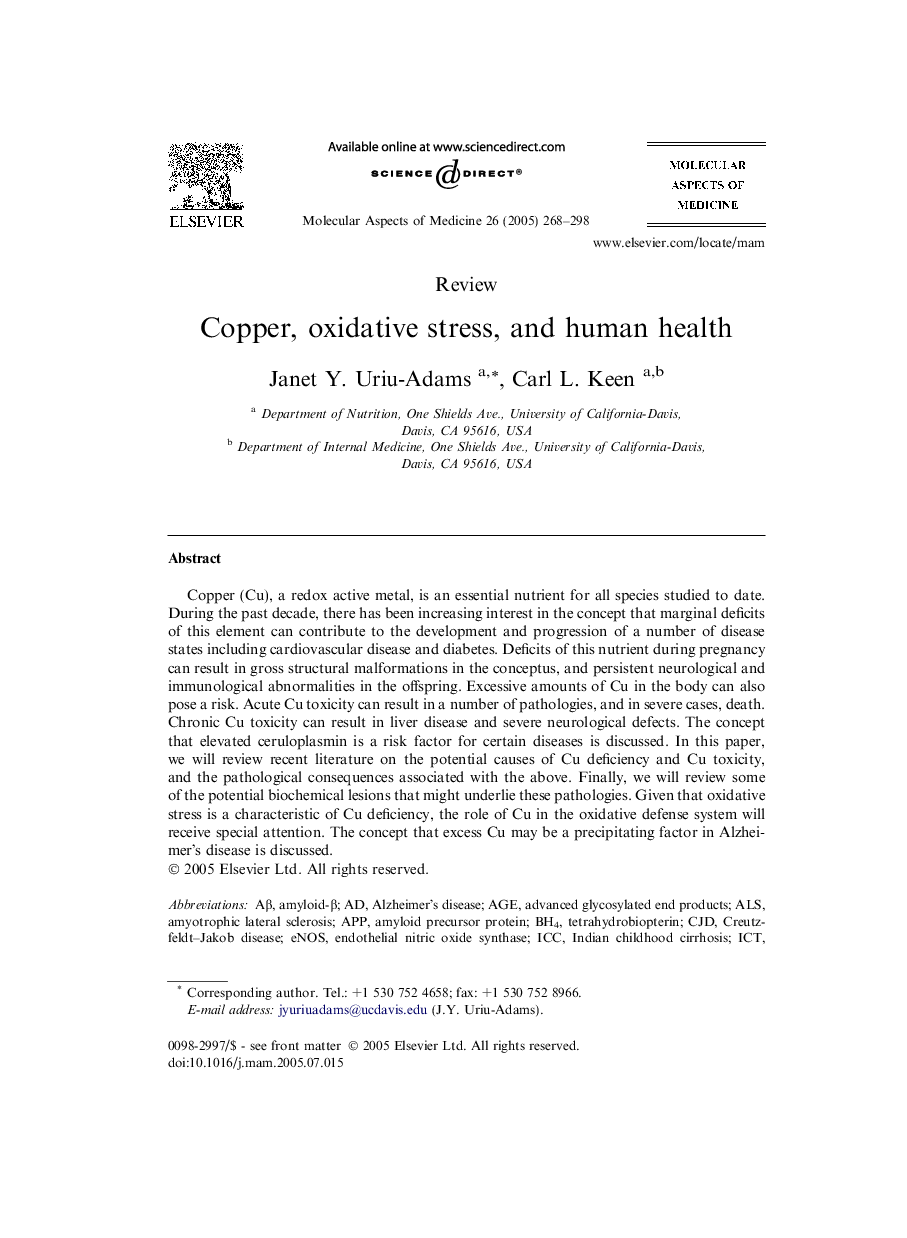| Article ID | Journal | Published Year | Pages | File Type |
|---|---|---|---|---|
| 9893149 | Molecular Aspects of Medicine | 2005 | 31 Pages |
Abstract
Copper (Cu), a redox active metal, is an essential nutrient for all species studied to date. During the past decade, there has been increasing interest in the concept that marginal deficits of this element can contribute to the development and progression of a number of disease states including cardiovascular disease and diabetes. Deficits of this nutrient during pregnancy can result in gross structural malformations in the conceptus, and persistent neurological and immunological abnormalities in the offspring. Excessive amounts of Cu in the body can also pose a risk. Acute Cu toxicity can result in a number of pathologies, and in severe cases, death. Chronic Cu toxicity can result in liver disease and severe neurological defects. The concept that elevated ceruloplasmin is a risk factor for certain diseases is discussed. In this paper, we will review recent literature on the potential causes of Cu deficiency and Cu toxicity, and the pathological consequences associated with the above. Finally, we will review some of the potential biochemical lesions that might underlie these pathologies. Given that oxidative stress is a characteristic of Cu deficiency, the role of Cu in the oxidative defense system will receive special attention. The concept that excess Cu may be a precipitating factor in Alzheimer's disease is discussed.
Keywords
Related Topics
Life Sciences
Biochemistry, Genetics and Molecular Biology
Biochemistry
Authors
Janet Y. Uriu-Adams, Carl L. Keen,
